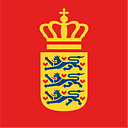“The Arctic is more than just a cold place; it’s Paradise.”
Ahead of his Arctic Imagination talk at NYPL, Danish-Norwegian author Kim Leine reveals his passion for a region that is often misunderstood.
What is the Arctic region? And, in particular, what is the Arctic for those who call it home? According to Danish-Norwegian writer Kim Leine, most people view the coldest and most northern part of the world as a forbidding and mythical place, more than a real and tangible region. In fact, says Leine, many people around the world believe that the Arctic is simply a freezing, dark, unpleasant and empty space — a white spot on the top of a globe. But, he adds, they are wrong. Leine knows this because he lived and worked in Greenland for several years, integrating into the Greenlandic community and experiencing the difficulties and challenges of the environment on his own body.
Now, the author is sharing his experiences and reflections on the Artic region as part of the third and final installation of the Artic Imagination project at the New York Public Library. #DenmarkInNY spoke to Kim Leine about his life in Greenland and how the Arctic Imagination project is bringing the story of a fascinating and complex territory like the Arctic to the general public.
DKNY: Can you tell me a bit about yourself and your relation to the Arctic region?
KL: In 1987, I finished my education as a nurse and in 1989 I moved to Nuuk in Greenland to work. I worked at a hospital in Nuuk for three years and moved to a small village in the more remote and desolate East Greenland where I worked alone at a health clinic. Through this work I got to know Greenland and Greenlanders quite well. I was a sort of “country doctor,” psychologist, undertaker, social worker, dentist, midwife and sometimes I even worked as a nurse. I made a lot of Greenlandic friends. I went hunting. I went dogsledding and participated in the common village life. After about ten years, I suffered a severe mental breakdown and tried to fix it through the self-administration of medicine. I became a addicted to morphine and ended up, after three years of drug abuse, in a psychiatric ward in Denmark. So Greenland was finished for me. It felt like I had been kicked out of Paradise, the only meaningful place on earth for me to live at that time.
DKNY: How are your own personal life experiences in Greenland reflected in your work?
KL: The feeling of having been kicked out of Paradise is a strong narrative motor. This, although I know very well that it is an illusion, is the feeling out of which I am writing my books.
DKNY: What does Arctic Imagination mean to you?
KL: The Arctic has a certain and unique magic. It is a place with great purity where the human condition and human conflicts stand out very clearly and unpolluted by modernity and technology. It is also a very fragile place that is extremely sensitive to climate changes. You can say it is the canary in the coalmine of our time.
DKNY: Today, the Arctic region is being challenged by melting ice and rising sea levels caused by climate change and that is one of the themes of the Arctic Imagination project. Is climate change a theme in your work and, if so, how do you address it?
KL: I have written newspaper articles about climate change, especially about how it is affecting the Greenlanders in their everyday life. Glaciers they have been looking at their whole lives vaporize into thin air and disappear. Whole populations of sled dogs are being shot because the ice is disappearing. The economically important fishing of halibut on the ice-fjords is becoming increasingly difficult and so on. In my fiction books, climate change plays a subliminal role without being directly mentioned.
DKNY: How can a project like Arctic Imagination help the wider public obtain a better grasp of what life in the Arctic region is like?
KL: I feel that the Arctic is more a mythical place than a real place to a lot of people. And a lot of people think that it is just a cold and dark and unpleasant place. But people live there. They have love lives. They have their best years there. And it is extremely important that more people get to know the Arctic better because strategically, politically and geopolitically it is so important. Just think about the fight for the North Pole and the establishing of new transpolar sailing routes. What we are doing with Arctic Imagination is of course a very small thing. But if we can create interest and present some knowledge about the region to our audiences, we will have achieved to make the Arctic a little more real and a little less dark and cold to people.
Buy tickets for “Kim Leine with Simon Winchester: Arctic Imagination” on December 12, 2018.
